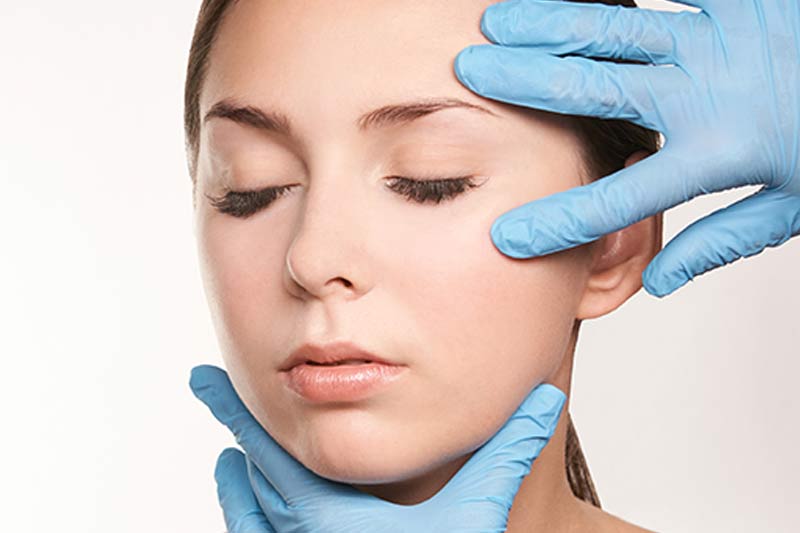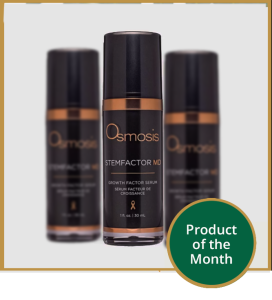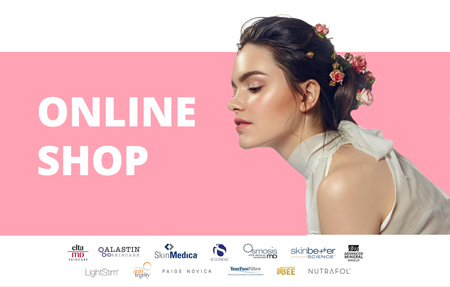Botox and Dysport are the two most common neurotoxins used in med spas and clinics around the country for erasing wrinkles and fine lines. Botox injections are more well known.
But what is Dysport? How similar are they and can they be used interchangeably?
We’ll explore the differences and similarities between Botox and Dysport treatment in this post.

What Is Dysport?
Dysport is a neurotoxin derived from the bacterium Clostridium botulinum used as an injection to treat wrinkles. The FDA approved the injectable to treat glabellar lines (vertical lines between the eyebrows).
What Is Botox?
Like Dysport, Botox is a botulinum toxin injection used for reducing the appearance of wrinkles on the face. The FDA approved it to treat glabellar lines (vertical lines between the eyebrows), wrinkles around the eyes (crow’s feet), and lines on the forehead.
Dysport vs. Botox: What Are the Differences?
Botox and Dysport have the same cosmetic purpose – to freeze facial muscles and prevent wrinkle formation. The following information shows how these two injectables differ, helping you choose the right treatment for your aesthetic goals.
Dysport vs. Botox Treatable Areas
Dysport is currently approved for one treatment area, while there are three Botox areas that are FDA approved.
Dysport
- Glabellar lines
Botox
- Glabellar lines
- Crow’s feet
- Forehead lines
Both products also treat other areas in off-label procedures, when the medical provider determines they can benefit the patient. Those areas include:
- Chin wrinkles
- Bunny lines
- Eyebrows
- Lines around the mouth
- Neck wrinkles
Note: Read our article and find out what you need to know about Botox brow lift and neck Botox.
Dysport vs. Botox Procedure
Botox and Dysport injectables work the same way. The medical practitioner disinfects the treatment area, applies a topical anesthetic, and injects the neurotoxin, inhibiting the underlying muscles’ ability to contract and cause wrinkles. The skin that covers the muscles relaxes, leading to a smooth, wrinkle-free complexion.
The injection takes only a few minutes. The whole procedure may last about half an hour, depending on how long it takes the anesthetic to take effect.
No recovery time is needed after a Botox or Dysport treatment. The patients can immediately continue with their daily activities.
Dysport vs. Botox Results
Dysport and Botox visibly reduce or eliminate the appearance of wrinkles in the treated area, resulting in smooth and even skin.
Dysport
The first results appear three days after the injection and last up to six months. The number of Dysport units a patient needs depends on how much wrinkle reduction the patient wants.
Note: If you want to find out more on how long does it take for dysport to work, read our blog post and find out.
Botox
The first results usually appear one or two weeks after the Botox procedure and last up to six months. The number of Botox units a patient needs depends on the area being treated and the patient’s desired look.
Note: Are you worried about getting too much Botox? Read our article and find out the effects of it.
Dysport vs. Botox Side Effects
Botox and Dysport are safe when performed by licensed and experienced medical practitioners. However, some patients experience side effects that usually resolve quickly, without the need for medical help.
Dysport
Most Dysport patients don’t experience any side effects. Potential symptoms are mild and include bruising, redness, and pain at the injection site.
Extremely rare and more severe side effects include:
- Headaches
- Drooping eyelids
- Nausea
- Muscle weakness
- Loss of bladder control
- Breathing problems
- Vision problems
- Bleeding (if the practitioner injects too deep and hits a blood vessel)
Botox
Bruising after Botox is the most common side effect, but it doesn’t affect all patients. Sometimes, a patient can suffer from a headache after the treatment. A headache usually resolves in 24-48 hours. A very small percentage of patients experience droopy eyelid after Botox. This issue gradually goes away in about three weeks.
Some patients suffer from:
- Tenderness, soreness, pain, or skin reactions in the injection area
- Nose and throat irritation
- Upper respiratory system infection
- Sinus inflammation
- Nausea
In extremely rare instances, patients may experience severe side effects, such as:
- Difficulty in swallowing, speaking, and breathing
- Flu-like illness
- Blurred vision
- Dry mouth
- Bleeding (if the practitioner injects too deep and hits a blood vessel)
- Fatigue
- Rashes
Note: Check out our article to find out more details on Botox side effects.
Dysport vs. Botox Aftercare
To ensure safe and effective results, medical providers recommend patients apply these aftercare tips after both Dysport and Botox treatments:
- Avoid exercise for 24 hours.
- Avoid high heat and direct exposure to sunlight.
- Don’t apply pressure to the treated area for 24 hours.
- Avoid lying or bending down for four hours.
- Use prescription medication according to your medical provider’s instructions.
- Use Tylenol if you experience pain in the injection site.
- Avoid other facial treatments for two weeks.
Note: If you want to learn more about Botox aftercare, find out 12 helpful tips in our article.
Dysport vs. Botox: Who Should Avoid the Treatments?
Botox and Dysport injectables are safe for most healthy adults with moderate to severe dynamic facial wrinkles.
However, people with the following conditions should avoid the treatments:
- Pregnancy
- Breastfeeding
- Allergies to botulinum toxin
- Muscle or nerve disorders
- Skin infections
- Scars
- Heart issues
- Bleeding issues
- Recent surgery
Dysport vs. Botox Cost
Vibrant Skin Bar offers Botox and Dysport treatments to interested patients. Consult our friendly medical professionals to find out how many units you need.
Dysport
One Dysport unit costs $4.50. The total cost depends on the number of units required.
Botox
One Botox unit costs $13.50. The price of a Botox treatment depends on the number of units required.
Is Botox or Dysport Better?
Botox and Dysport use the same type of neurotoxin to reduce visible lines on the face. Their procedures and effects are very similar.
If you want to reduce lines on the forehead or around the eyes, choose Botox because it is FDA approved for those areas.
If you want to minimize frown wrinkles between the eyebrows, you may choose between both Botox and Dysport.
The decision of which neurotoxin injection to use may come down to your provider’s recommendation. Please note you should never have both products injected in an area at the same time or during the same treatment. Also note that some Botox patients don’t react to this cosmetic treatment, so they can try Dysport during the following session. The same is true for Dysport patients, who may have better results with Botox injections.
Conclusion
Both Botox and Dysport are popular injectables for reducing wrinkles. The right product for you will depend on which areas you want to treat, your previous injection history, your body’s ability to utilize the medication, and how quickly you want to see results. In most cases, either Dysport or Botox can be used. In the right hands, the outcome will be the same.
To check out our clients’ results, feel free to browse through our Before and After Gallery!
Contact our staff and book your treatment today!
Next, learn about the differences between Dysport and Xeomin.




